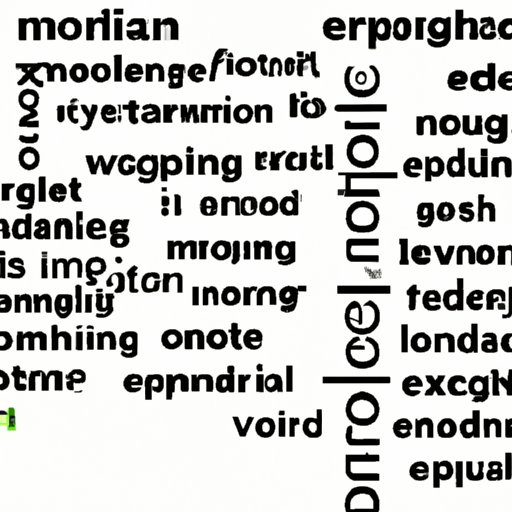Introduction
Mood is an essential element of any piece of writing. It’s what sets the tone for the story and helps bring it to life for the reader. When done correctly, creating a mood can draw readers into the story and make them feel as if they’re part of the action. The key to creating a successful mood in writing is to use descriptive language, sensory details, and other techniques to evoke emotion and set the scene. In this article, we’ll explore some tips and techniques for creating mood in writing.
Use Descriptive Language to Create a Vivid Mental Image of the Scene
When creating mood in writing, one of the most important things to keep in mind is that you want to create a vivid mental image of the scene. This means choosing your words carefully and using descriptive language to make the picture come alive for the reader. Instead of simply saying “the sky was blue”, try something like “the sky was a brilliant, azure blue that stretched for miles” or “the sky was a deep navy, dotted with small white stars”. This type of language will help create a more vivid mental image for the reader and help them become immersed in the story.

Utilize Sensory Details to Evoke Emotion
Another important element of creating mood in writing is to utilize sensory details. This means including information about what the characters see, hear, smell, taste, and touch to help bring the scene to life. For example, instead of simply saying “the room was dark”, you could say “the room was cloaked in darkness, punctuated only by a sliver of moonlight streaming through the window”. These types of details will help evoke emotion in the reader and make them feel as if they’re actually experiencing the scene.
Choose Words that Establish the Mood
The words you choose are also important when it comes to creating mood in writing. Different types of words can be used to set a certain mood, such as happy, sad, peaceful, anxious, etc. For example, if you want to create a peaceful mood, you might use words like “serene”, “calm”, “tranquil”, and “soothing”. If you want to create an anxious mood, you might use words like “tense”, “uneasy”, “jittery”, and “restless”. Choosing the right words can help set the mood for the scene and make it more powerful.
Use Metaphors and Similes to Paint a Picture in the Reader’s Mind
Metaphors and similes can also be very effective when it comes to creating mood in writing. Metaphors and similes allow you to compare two things, which can help paint a vivid picture in the reader’s mind. For example, instead of saying “the river was flowing quickly”, you could say “the river was like a raging bull, rushing past with tremendous force”. This type of language will help create a more powerful image and evoke a stronger emotion in the reader.

Create Tension or Suspense with Pacing and Dialogue
Pacing and dialogue can also be effective tools for creating mood in writing. By carefully controlling the pace of the story and the dialogue between characters, you can create a sense of tension or suspense. For example, you can use short sentences and quick dialogue to increase the tension, or longer sentences and slower dialogue to create a more peaceful atmosphere. Additionally, you can use pauses and silences between characters to create a feeling of suspense or anticipation. Utilizing pacing and dialogue can be a great way to create mood in writing.

Make Sure Your Characters are Relatable and Have Emotional Depth
Finally, it’s important to make sure your characters are relatable and have emotional depth. Readers need to be able to identify with the characters and understand their motivations in order to truly become immersed in the story. To do this, you should provide enough detail about each character so that the reader can form a connection with them. Additionally, you should give each character an emotional depth so that they seem real and not just cardboard cutouts. Providing relatable characters with emotional depth can be a great way to create mood in writing.
Conclusion
In conclusion, creating mood in writing is an essential element of any story. By utilizing descriptive language, sensory details, metaphors, similes, pacing, dialogue, and relatable characters with emotional depth, you can effectively create a mood that draws readers into the story and makes them feel as if they’re part of the action. With these tips and techniques, you can create a powerful and evocative mood in your writing.
(Note: Is this article not meeting your expectations? Do you have knowledge or insights to share? Unlock new opportunities and expand your reach by joining our authors team. Click Registration to join us and share your expertise with our readers.)
